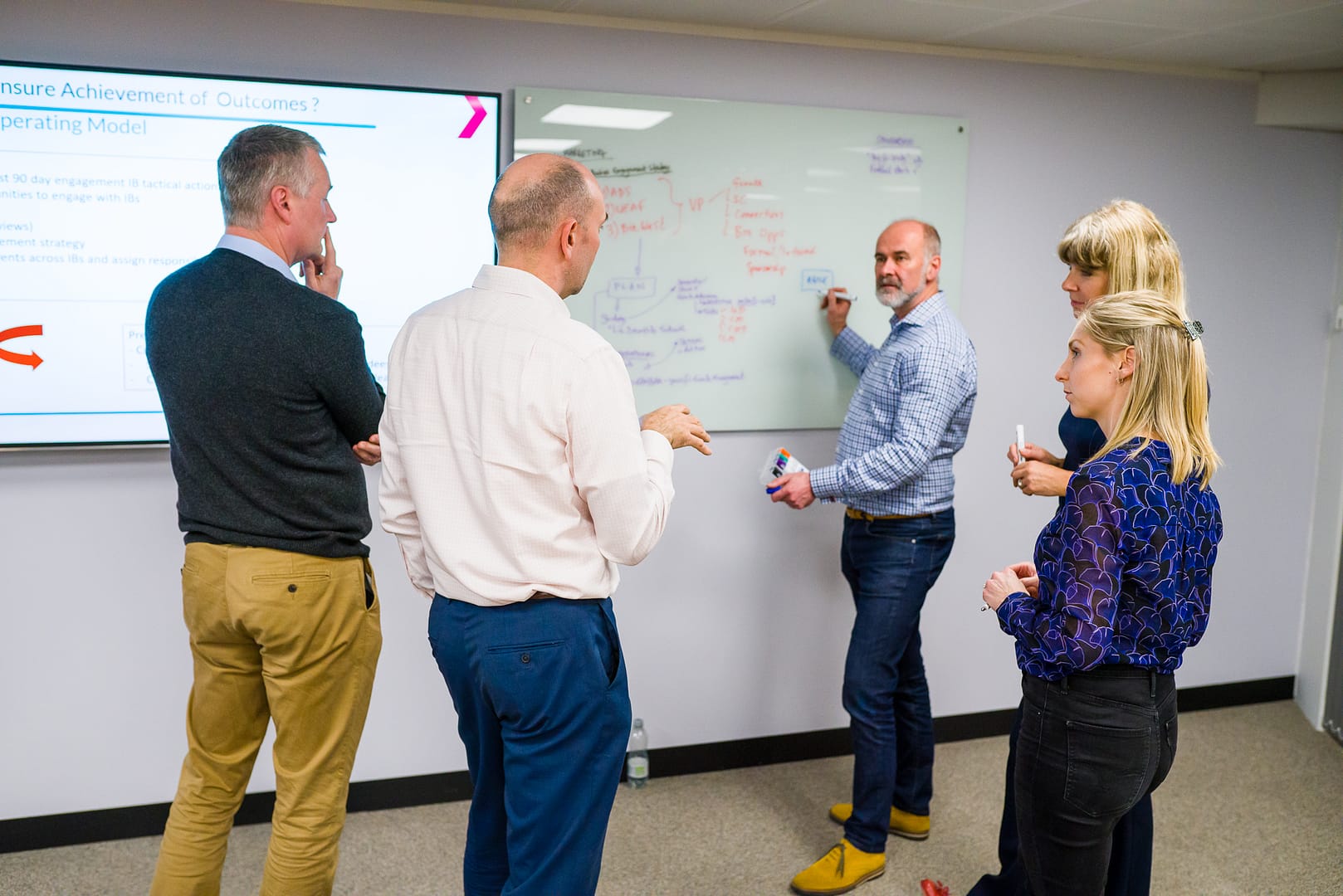

“How To” Guide to Better Transformation Management
There is no escaping that successfully managing transformation, whether it be digital, organisational or operational, is tricky and comes with significant risk, obstacles and complexity.
Through our work at Avantix, we have seen many examples (both good and bad) of how different organisations, across a range of sectors, have tackled this and have highlighted some common challenges that they all have faced:

1. Resistance to Change: People often resist changes due to fear of the unknown, comfort with existing processes, or scepticism about new methodologies. Engaging team members early and addressing their concerns can help mitigate this resistance.
2. Lack of Clear Vision and Strategy: Without a clear vision and strategy, transformation efforts can lose momentum and purpose. It’s crucial to have a well-defined plan that aligns with the organisation’s goals
3. Cultural Impact: Transformation can significantly impact the organisational culture. Ensuring that the cultural aspects are addressed and that there is buy-in from all levels of the organisation is essential
4. Skill Gaps: New technologies and processes often require new skills. Providing adequate training and support to employees is essential to bridge these gaps
5. Siloed Organisational Structure: Silos within an organisation can hinder collaboration and communication, which are vital for successful transformation. Promoting cross-functional teams and shared goals can help break down these barriers.
6. Budget Constraints: Transformations can be costly, and budget constraints can limit the scope and speed of implementation. Careful planning and prioritisation of initiatives are needed to manage costs effectively.
7. Measuring ROI: Demonstrating the return on investment (ROI) for transformation initiatives can be difficult. Establishing clear metrics and regularly tracking progress can help in showing the value of the transformation.
In our opinion addressing these challenges requires a compelling case for transformation and a trusted ability to deliver which are underpinned through strategic planning, effective change management, continuous communication and a way of measuring success.
Using the knowledge and learnings we have gained across many years of supporting companies transformation journeys, we have devised the following “How To” Guide to better transformation management which we hope you will find useful in supporting your change story.
How To” Guide: Step 1. Develop a Strategic Plan
Strategically planning for transformation involves several key steps to ensure that the process is effective and aligned with the organisation’s goals:
1. Define the Vision and Objectives: Clearly articulate what the transformation aims to achieve. This vision should align with the overall strategic goals of the organisation, the programme and/or the team affected by the change,
Avantix Top Tip: Use Objectives and Key Results (OKRs) to help you link transformations to wider organisational objectives, define key measurable outcomes and breakdown work into manageable initiatives and tasks.
2. Conduct a Thorough Assessment: Evaluate the current state of the organisation, including its strengths, weaknesses, opportunities, and threats (SWOT analysis). This helps in understanding the areas that need transformation and the external factors that you don’t have control over but need to consider.
3. Develop a Change Roadmap: Create a detailed plan that outlines the steps needed to achieve the transformation. This should include timelines, milestones, internal and external dependencies and resource allocation
Avantix Top Tip: Develop and maintain a Change Roadmap so you and respective stakeholders can understand how different transformation or change initiatives might intersect and avoid the potential “change fatigue” that can come with too many initiatives running simultaneously.
How To” Guide: Step 2. Effective Change Management
Effective change management is a structured approach to transitioning individuals, teams, and organisations from a current state to a desired future state. Here are some key elements that contribute to its success:
1. Strong Leadership: Effective change management requires strong leadership to guide and support the process. A coalition of leaders at different levels should be established, aligned around the objectives and strategy for the transformation. Leaders should be visible, accessible, and committed to the change.
2. Stakeholder Engagement: Engaging stakeholders early and throughout the process ensures their buy-in and reduces resistance. This includes regular communication and involving them in decision-making.
3. Communication: Open, transparent, and continuous communication helps manage expectations and keeps everyone informed about progress and any changes to the plan.
4. Implement Incrementally: Rather than attempting a big-bang approach, implement changes in phases or through an agile approach. This allows for adjustments based on feedback and reduces the risk of failure.
Avantix Top Tip: Align transformation activities with broader organisational cadence and approach to synchronise with “day to day” tasks and initiatives and identify dependencies on wider team.
5. Training and Support: Providing adequate training and support to employees helps them adapt to new processes and technologies. This can include workshops, online courses, and one-on-one coaching.
6. Monitoring and Feedback: Regularly monitoring the progress of the change and gathering feedback allows for adjustments to be made as needed. This ensures the change stays on track and meets its objectives.
Avantix Top Tip: Create benefit cases to capture transformation activities and link them to key programmatic and operational risks through associated mitigation plans. These can be visualised to report progress through risk burndown charts.
How To” Guide: Step 3. Continuous Communication
It can’t be overstated as to the importance of clear and regular communication in ensuring that everyone in the organisation understands, supports, and engages with the change. Here are some strategies to achieve this:
1. Develop a Clear Message: Clearly articulate the vision, objectives, and benefits of the transformation in a way all stakeholders understand “what’s in it for me”. Ensure that the message is consistent and aligns with the organisation’s goals.
2. Use Multiple Channels: Utilise various communication channels such as emails, meetings, intranet, and social media to reach all employees. Remember that different people prefer different modes of communication.
Avantix Top Tip: In close collaboration with the organisations communication team, develop a Communication Management Plan to support the transformation rollout.
3. Engage Leadership: Leaders should be visible and actively involved in the communication process. Their support and commitment can significantly influence employee buy-in
4. Two-Way Communication: Encourage feedback and questions from employees. This helps in addressing concerns and making them feel involved in the process
5. Tailor the Message: Customize the communication to different audiences within the organisation. Different departments or teams may have unique concerns and interests
6. Regular Updates: Provide regular updates on the progress of the transformation. This keeps everyone informed and helps maintain momentum
7. Highlight Successes: Celebrate milestones and successes to boost morale and demonstrate the positive impact of the transformation. Find champions and advocates who others will listen to.
Avantix Top Tip: Utilise your existing organisation tools, forums and processes to help celebrate successes and emphasise personal achievements.
How To” Guide: Step 4. Measure Success
Lastly, to support engagement and ultimately the sustainable achievement of any transformation, it is vital to measure the success through metrics to ensure that the desired outcomes are being achieved. By regularly monitoring these metrics, organisations can ensure that their transformation efforts are on track and make necessary adjustments to achieve their goals.
Here are some pointers on how to measure transformation success:
1. Key Performance Indicators (KPIs): Establish specific KPIs that align with the goals of the transformation. These could include financial metrics like revenue growth, cost savings, or return on investment (ROI)
Avantix Top Tip: Adopt SMART technique to make KPIs truly measurable and achievable. Refer back to any respective benefit case or business case to reflect expected benefits both tangible and intangible.
2. Employee Engagement and Adoption: Measure how well employees are adopting new processes and technologies. Surveys, usage statistics, and feedback can provide insights into engagement and retention levels.
3. Customer Satisfaction: Track customer satisfaction through surveys, Net Promoter Scores (NPS), and customer feedback. Improved customer satisfaction can indicate successful transformation
4. Operational Efficiency: Assess improvements in operational efficiency, such as reduced cycle times, increased productivity, and fewer errors
5. Innovation and Agility: Evaluate the organisation’s ability to innovate and respond to market changes. This can be measured by the number of new products or services launched and the speed of implementation
6. Cultural Change: Monitor changes in organisational culture through employee surveys and feedback. A positive shift in culture can be a strong indicator of successful transformation
7. Financial Performance: Ultimately, the financial performance of the organisation should reflect the success of the transformation. This includes metrics like profit margins, market share, and overall financial health
8. Project Milestones and Deliverables: Track the completion of key project milestones and deliverables. Meeting these on time and within budget is a good indicator of progress
Transformation or change is a vital ingredient of any organisation who are seeking to evolve, improve and ultimately succeed. Managing transformation though, as we have seen, is complex and rarely without it’s obstacles or incidents to overcome.
In our judgement though the good news is that with a clear plan, a strong change management approach, tangible measures of success and a recognition you can never over communicate it is possible to achieve better transformation management.
From all of us here at Avantix, we hope you find this “How To” Guide of benefit in your own transformation journeys, and as always, we look forward to hearing your own thoughts and insights on this topic.